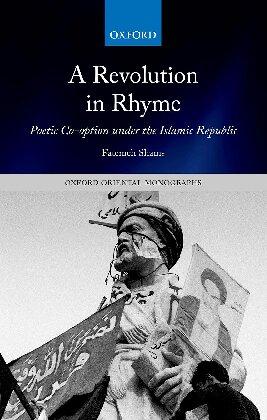https://ebookmass.com/product/integrated-wastewater-management-andvalorization-using-algal-cultures-goksel-n-demirer/
ebookmass.com
A Revolution in Rhyme: Poetic Co-option under the Islamic Republic Fatemeh Shams
https://ebookmass.com/product/a-revolution-in-rhyme-poetic-co-optionunder-the-islamic-republic-fatemeh-shams/
ebookmass.com
The Cambridge Handbook of Experimental Syntax (Cambridge Handbooks in Language and Linguistics) Grant Goodall
https://ebookmass.com/product/the-cambridge-handbook-of-experimentalsyntax-cambridge-handbooks-in-language-and-linguistics-grant-goodall/
ebookmass.com
The Golden Age of Indian Buddhist Philosophy Jan Westerhoff
https://ebookmass.com/product/the-golden-age-of-indian-buddhistphilosophy-jan-westerhoff/
ebookmass.com
Learning from my daughter : the value and care of disabled minds Eva Feder Kittay
https://ebookmass.com/product/learning-from-my-daughter-the-value-andcare-of-disabled-minds-eva-feder-kittay/
ebookmass.com





Introduction to physical anthropology Fifteenth Edition, Student Edition Bartelink
https://ebookmass.com/product/introduction-to-physical-anthropologyfifteenth-edition-student-edition-bartelink/
ebookmass.com


C.A.Cole
DepartmentofComputerScienceandEngineering,UniversityofSouthCarolina,Columbia,SC, UnitedStates
R.M.Cordeiro
CenterforNaturalandHumanSciences,FederalUniversityofABC,SantoAndre ´ ,SP,Brazil
E.B.Costa
CenterforNaturalandHumanSciences,FederalUniversityofABC,SantoAndre ´ ,SP,Brazil
P.Costa
DepartmentofSystemsEngineeringandOperationsResearch,GeorgeMasonUniversity,Fairfax, VA,UnitedStates
C.A.deLunaOrtega
UniversidadPolite ´ cnicadeAguascalientes,Aguascalientes,Mexico
A.Deeter
IntegratedBioscienceProgram,DepartmentofComputerScience,TheUniversityofAkron,Akron, OH,UnitedStates
J.R.Deller
MichiganStateUniversity,EastLansing,MI,UnitedStates
C.DiRuberto
DepartmentofMathematicsandComputerScience,UniversityofCagliari,Cagliari,Italy
Z.-H.Duan
IntegratedBioscienceProgram,DepartmentofComputerScience,TheUniversityofAkron,Akron, OH,UnitedStates
C.Early
DepartmentofScienceandEngineeringTechnology,UniversityofHouston-ClearLake,Houston, TX,UnitedStates
C.S.Ee
MultimediaUniversity,Melaka,Malaysia
A.Ertas DepartmentofMechanicalEngineering,TexasTechUniversity,Lubbock,TX,UnitedStates
A.Fahim
DepartmentofComputerScienceandEngineering,UniversityofSouthCarolina,Columbia,SC, UnitedStates
A.C.Ferraz
PhysicsInstitute,UniversityofSaoPaulo,SaoPaulo,SP,Brazil
Y.Fischer
FraunhoferInstituteofOptronics,SystemTechnologiesandImageExploitationIOSB,Karlsruhe, Germany
B.D.Fleet
MichiganStateUniversity,EastLansing,MI,UnitedStates
A.Fronville
ComputerScienceDepartment,UniversityofWesternBrittany,Brest,France
A ´ .Monteagudo
DepartmentofComputerScience,UniversityofACorun ˜ a,ACorun ˜ a,Spain
L.M.Montoni
ComplexSystemandSecurityLaboratory,UniversityCampusBio-MedicoofRome,Rome,Italy
J.L.Mustard
DivisionofBasicSciences,LaboratoryofBioinformaticsandComputationalBiology,KansasCity UniversityofMedicineandBiosciences,KansasCity,MO,UnitedStates
A.J.P.Neto
CenterforNaturalandHumanSciences,FederalUniversityofABC,SantoAndre ´ ,SP,Brazil
M.E.Nia
MultimediaUniversity,Melaka,Malaysia
H.Nishimura
GraduateSchoolofAppliedInformatics,UniversityofHyogo,Hyogo,Japan
S.Nobukawa
DepartmentofManagementInformationScience,FukuiUniversityofTechnology,Fukui,Japan
P.Philipp
VisionandFusionLaboratoryIES,KarlsruheInstituteofTechnologyKIT,Karlsruhe,Germany
C.W.Philipson
BioTherapeuticsInc.,Blacksburg,VA,UnitedStates
L.Putzu
DepartmentofMathematicsandComputerScience,UniversityofCagliari,Cagliari,Italy
T.S.Rani
SCISUniversityofHyderabad,Hyderabad,Telangana,India
S.K.Rath
DepartmentofComputerScienceandEngineering,NationalInstituteofTechnologyRourkela, Rourkela,India
W.C.Ray
TheResearchInstituteatNationwideChildren’sHospital,Columbus,OH,UnitedStates
V.Rehbock
DepartmentofMathematicsandStatistics,CurtinUniversity,Perth,WA,Australia
V.L.Rivas
ComputerScienceDepartment,InstitutoTecnologicodeAguascalientes,Aguascalientes, Mexico
V.Rodin
ComputerScienceDepartment,UniversityofWesternBrittany,Brest,France
J.C.M.Romo
ComputerScienceDepartment,InstitutoTecnologicodeAguascalientes,Aguascalientes,Mexico
F.J.L.Rosas
ComputerScienceDepartment,InstitutoTecnologicodeAguascalientes,Aguascalientes,Mexico
Q.Zhang
ShantouUniversityMedicalCollege,Shantou,Guangdong,PRChina;ShantouUniversity, Shantou,Guangdong,PRChina
Y.Zhang
NorthDakotaStateUniversity,Fargo,ND,UnitedStates
H.Zhao
IntegratedBioscienceProgram,DepartmentofComputerScience,TheUniversityofAkron,Akron, OH,UnitedStates
B.Zheng
ShantouUniversity,Shantou,Guangdong,PRChina
D.Zhukov
MoscowStateTechnicalUniversityofRadioEngineering,ElectronicsandAutomation"MIREA", Moscow,Russia
B.B.Zobel
DepartmentofDiagnosticImaging,UniversityCampusBio-MedicoofRome,Rome,Italy
Preface
Itgivesusgreatpleasuretointroducethiscollectionofchapterstothereadersofthebookseries “EmergingTrendsinComputerScienceandAppliedComputing”(MorganKaufmann/Elsevier).This bookisentitled“EmergingTrendsinComputationalBiology,Bioinformatics,andSystemsBiology— SystemsandApplications.”Thisisthesecondbookintheseriesaboutthetopic.Weareindebtedto ProfessorQuoc-NamTran(ProfessorandDepartmentChair)oftheUniversityofSouthDakotafor acceptingourinvitationtobethesenioreditor.Hisleadershipandstrategicplanmadetheimplementationofthisbookprojectawonderfulexperience.
ComputationalBiologyisthescienceofusingbiologicaldatatodevelopalgorithmsandrelations amongvariousbiologicalsystems.Itinvolvesthedevelopmentandapplicationofdata-analyticaland algorithms,mathematicalmodeling,andsimulationtechniquestothestudyofbiological,behavioral, andsocialsystems.Thefieldismultidisciplinaryinthatitincludestopicsthataretraditionallycovered incomputerscience,mathematics,imagingscience,statistics,chemistry,biophysics,genetics,genomics,ecology,evolution,anatomy,neuroscience,andvisualizationwherecomputerscienceactsasthe topicalbridgebetweenallsuchdiverseareas(foraformaldefinitionofComputationalBiology,referto http://www.bisti.nih.gov/docs/compubiodef.pdf).ManyconsidertheareaofBioinformaticstobea subfieldofComputationalBiologythatincludesmethodsforacquiring,storing,retrieving,organizing, analyzing,andvisualizingbiologicaldata.TheareaofSystemsBiologyisanemergingmethodology appliedtobiomedicalandbiologicalscientificresearch.Itisanareathatoverlapswithcomputational biologyandbioinformatics.Thiseditedbookattemptstocovertheemergingtrendsinmanyimportant areasofComputationalBiology,Bioinformatics,andSystemsBiologywithparticularemphasison systemsandapplications.
Thebookiscomposedofselectedpapersthatw ereacceptedforthe2014and2015International ConferenceonBioinformatics&ComputationalBiology(BIOCOMP’14andBIOCOMP’15),July, LasVegas,USA.Selectedauthorsweregiventheopportunitytosubmittheextendedversions oftheirconferencepapersaschaptersforpublicationconsidera tioninthiseditedbook.Other authors(notaffiliatedwithBIOCOMP)werealsogiventheopportunitytocontributetothisbook bysubmittingtheirchaptersforevaluation.Theeditorialboardselected34chapterstocomprise thisbook.
TheBIOCOMPannualconferencesareheldaspartoftheWorldCongressinComputerScience, ComputerEngineering,andAppliedComputing,WORLDCOMP(http://www.world-academy-ofscience.org/).AnimportantmissionofWORLDCOMPincludes“Providingauniqueplatformfora diversecommunityofconstituentscomposedofscholars,researchers,developers,educators,andpractitioners.TheCongressmakesconcertedefforttoreachouttoparticipantsaffiliatedwithdiverseentities(suchas:universities,institutions,corporations,governmentagencies,andresearchcenters/ labs)fromallovertheworld.Thecongressalsoattemptstoconnectparticipantsfrominstitutionsthat have teaching astheirmainmissionwiththosewhoareaffiliatedwithinstitutionsthathave research astheirmainmission.Thecongressusesaquotasystemtoachieveitsinstitutionandgeographydiversityobjectives.”Asthisbookismainlycomposedoftheextendedversionsoftheacceptedpapersof BIOCOMPannualconferences,itisnosurprisethatthebookhaschaptersfromahighlyqualifiedand diversegroupofauthors.
•Prof.XiangSimonWang.Head,LaboratoryofCheminfomaticsandDrugDesign,Howard UniversityCollegeofPharmacy,Washington,DC,USA
•Prof.MaryQ.Yang.Director,Mid-SouthBioinformaticsCenterandJointBioinformaticsPh.D. Program,MedicalSciencesandGeorgeW.DonagheyCollegeofEngineeringandInformation Technology,UniversityofArkansas,USA
•Prof.JaneYou.AssociateHead,DepartmentofComputing,TheHongKongPolytechnicUniversity, Kowloon,HongKong
•PengZhang.BiomedicalEngineeringDepartment,StonyBrookUniversity,StonyBrook,New York,USA
•Prof.WenbingZhao.DepartmentofElectricalandComputerEngineering,ClevelandState University,Cleveland,Ohio,USA
Wearegratefultoallauthorswhosubmittedtheircontributionstousforevaluation.Weexpressour gratitudetoBrianRomerandAmyInvernizzi(Elsevier)andtheirstaff. Wehopethatyouenjoyreadingthisbookasmuchasweenjoyededitingit.
OnBehalfofEditorialBoard: HamidR.Arabnia,PhD Editor-in-Chief,“EmergingTrendsinComputerScienceandAppliedComputing” Professor,ComputerScience DepartmentofComputerScience,TheUniversityofGeorgia,Athens,GA,UnitedStates
